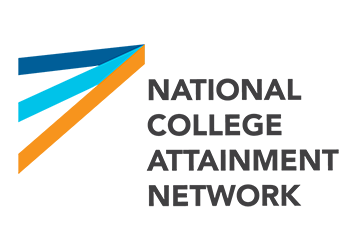 Bill DeBaun, National College Attainment Network
Bill DeBaun, National College Attainment Network
Among students who entered college in the fall of 2014, about 60% completed a degree or certificate six years later.
Stopouts represent lost time for students, significant financial burden in terms of loans, and foregone increases to human capital in the form of health, economic and civic outcomes. It costs students, their families, and our communities, states, and nation when students don’t complete.
Our college completion leak starts well before the first college semester, and there’s something we can do to help address it. One of the most important things schools, community-based programs, and everyone involved in advising a student can do is to make sure they wind up at the right postsecondary institution for them in the first place.
The concepts of academic “fit” and “match” are likely well-known to most readers here, but for a quick refresher, “match” is how well-aligned a student’s academic profile (e.g., GPA, admissions test scores) is with the institutions’ student body. “Fit” is a more ephemeral concept that describes how well an institution meets all of a students’ other needs and preferences (e.g., location, size, academic and extracurricular programming, atmosphere, and so much more).
To make fit and match conversations with students as productive as possible, NCAN has created a series of resources specifically designed for districts, schools, programs, and practitioners:
- First, check out the Fit & Match Toolkit, which is a good crash course and offers thoughts on platforms to track fit and match.
- Next, to see how these concepts get introduced in a real-life context, this blog post documents Springfield (MA) Public Schools’ professional development around fit and match and summer melt.
- Not to be outdone, Achieve Atlanta and Atlanta Public Schools came together to create a Match & Fit List Builder; it may seem complicated, but this is something within reach for most districts who have a StudentTracker subscription with the National Student Clearinghouse.
- Finally, when it’s time to roll up your sleeves and do the deepest dive, NCAN’s eLearning unit on college fit and match is a comprehensive look at the concepts, platforms, and advising strategies that lead to increasing students’ likelihood of getting to the institution that meets their aspiration and ability.
If more students across the country received postsecondary advising through the lens of fit and match, it’s likely we’d see completion rates rise over time. No matter what your program or organization’s current practice is, take a look at the resources above and see if there isn’t some way to strengthen advising and provide students with options that even better fit (and match) their needs.
RELATED ARTICLES:
NCAN Guest Blog: Summer is the time to build strong pathways between K-12 and higher ed
NCAN Guest Blog: A Quick Guide to Financial Aid Award Letters
NCAN Guest Blog: Stopping Summer Melt Starts in the Spring
